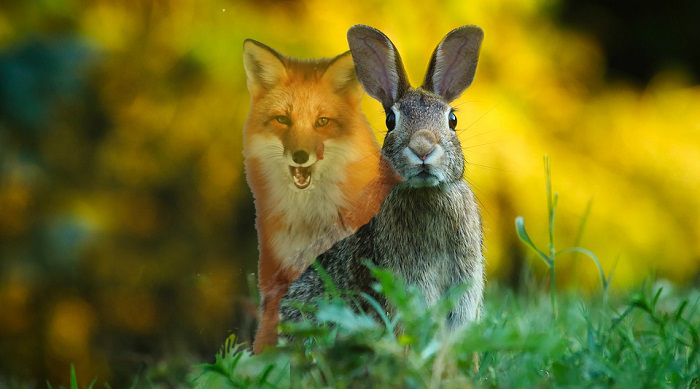During this pandemic, I have watched eagerly as the experts understand and communicate, how the virus is structured and how it behaves. I have been attempting to understand a little more, although it fair to say that my understanding will make no difference.
The way the virus behaves by binding onto and fusing with host cells, how its spikey surface structure locks onto cells in our body, and how it reproduces by using the host cells to replicate its genome to make proteins needed for new virus cells.
This has been an object lesson in how our brains work and how we gather knowledge and use it for our survival. The experts are looking at the virus-cell, the pattern of behaviour in conjunction with its structure pattern, combined with their existing knowledge and experience. Gradually building knowledge and building a pattern of behaviour, allows prediction of behaviour. If we know what something is going to do, how it will act or react in the future, they can interrupt the pattern: pattern and prediction.
Our brains are built for pattern-making, and pattern-making allows us to predict. To say what will happen next and act accordingly. It's a survival and a learning mechanism. Predictability of pattern or sequence gives us the power to accept or change our future.
The fox and the rabbit.
A fox chases after a tasty looking rabbit and thinks to itself; "here's a nice juicy meal, all I have to do is catch it!"
The rabbit instinctively runs away from the fox, and the fox instinctively chases the rabbit. The rabbit switches direction left and right, without warning, unpredictably (even to itself) to evade the fox. The difficulty for the fox is to predict which way the rabbit will turn next and intercept it.
If the fox could accurately predict how the rabbit would run, he would have a better chance of catching it and enjoying a rabbit dinner, but he can't, so it's down to tenacity and luck.
The rabbit, fortunately for it, also cannot predict which way it will run. If it could have a predictable escape method, then there is a chance that the fox might be able to put that pattern of behaviour into a prediction and anticipate the rabbit's next move. It's the unpredictability that makes it hard for the fox.
When we see a pattern, we can predict how something will behave in the future, which has several advantages (rabbit dinner being one). The pattern is how we understand and give meaning to things, and it's one of the keys to understanding the landscape of the mind and memory.
Rivers, Valleys and Jelly.
Landscapes are memory surfaces. They record what has happened in their past and, to some extent, what will probably happen in the future. The contours of a surface give an accumulated memory trace of the weather and the rain that has fallen. Rainfall initially forms small rivulets which, over millennia, for into streams and rivers. Once the pattern has begun, it will grow ever more permanent and predictable. The nature of the surface will determine what sort of river will be formed.
As a further metaphor, imagine a newly made fruit jelly, set on the table. If we drop some hot water on the surface, it will melt a little area, a depression, on the Jelly. We pour away that water (and a little dissolved jelly) and then drop a bit more hot water on the Jelly. This new hot water will run into the depression and make it deeper. It is the contours of the surface that dictate where the water will flow. The eventual pattern that forms will be dependent on where the hot water was placed, and what sequence the hot water was applied. This is what Edward de Bono call a self-organising system or pattern.
The most easily activated area or pattern (incoming information) is the most familiar one with the brain. The pattern that has been encountered most often, the one that has the most traces on the memory surface. The familiar pattern becomes the most used one.
This illustrates how patterns occur in the mind and how habits and habitual ways of behaving are formed. Once a pathway is established, then this is used again and again. Poor or inefficient practices and developed as easily as good, useful habits. The sequence in which the information arrives will, to some extent, dictate how the thinking pattern forms.
Pattern is how we understand.
When we experience an event, we look for the connections and the patterns that will give it meaning and usefulness. Our brains don't seek to understand and explain, though, they seek to create explanations. Explanations merely need to find a pattern that can be applied that "makes sense". When things are connected into meaningful patterns, we understand, because it now has meaning.
Patterns suggest repetition and some predictability, but patterns of things don't repeat and have (repetitive) unpredictability: similar differences and different similarities. Our brains look for each experience's utility by interpreting it and fitting it into existing patterns of thought. We prime ourselves with what we already know. So, once a thinking "valley" is formed, as with a river, it is challenging to re-direct the flow.
Uncertainty and unpredictability drive the impulse to find meaning and predictability. Creativity works from the desire to resolve uncertainty and bring it into a pattern of understanding and meaning.
Music and the beauty of pattern.
We enjoy music because of the sequence of pitch, tone and interval. Music is aural (and tactile) pattern-making. The patterns that music forms, create emotion and story in our minds. Similarly, poetry and mathematics are also dependent on their ability to create meaning from the connections, associations and relationships between each moment. Even where there is chaos, we attempt to understand by bringing it into a pattern of behaviour. Even in chaos theory, we try to attach a predictability of unpredictability. It is both the formation and upset of a pattern which we try to explain.
Within nature and our understanding of our world and our (personal) universe, we find a pattern. We create laws and rules that explain the predictability of how our physical world behaves. The laws are the patterns and connections that we observe and weave together to understand how things have happened and how they will happen in the future.
Religion, Science, Belief.
In the form of a story, pattern has long been the favoured tool of religion and belief systems. Creation stories, moral tales and hidden meanings string together observations and interpretations to explain why we are here and how things happen. Pattern creates purpose by giving explanation and meaning.
For instance, the Rosicrucian's believe everything can be viewed as vibration, from touch, to sound, to electro-magnetism, to heat and light, through to x-rays and Gamma and cosmic frequencies. It is the pattern, the frequency that gives an explanation of how things happen.
From the quantum to classical mechanics, scientists attempt to explain how the world works by proposing more precise theories. These are explanations of how things behave, and one of the criteria of verification is that there are predictable and replicable results.
Like the valleys formed by the constant weather and rain, these stories begin as drip and form into powerful explanations of the rich pattern of life.
Story.
I have often wondered how it is that, even if we know the ending of a film or story, we still enjoy it? Story undoubtedly satisfies our need for a pattern of explanation leading to a transformation or change of some kind. But why do we still enjoy it even if we know what to expect?
My theory is that we still take pleasure in the pattern that the journey makes. It satisfies some deep desire to make sense of things by understanding the steps, the pattern, leading to its conclusion. We enjoy the pattern that the journey makes.
In other types of film or story where we are surprised by the ending. The switch from one pattern to a novel pattern that delights. A lot of humour works similarly. Leading us on one path and, at the last moment, changing direction, switching from one pattern to another, surprises us by upsetting the pattern we thought we were following.
Insights often work similarly, finding a different or new connection or pattern, to give a new fresh view. Both insights and humour have similar emotional effects, we smile or laugh!
Big Data.
It would be impossible to end this article without speaking about Big Data and algorithms. Raw data, in vast quantities, is collected by organisations and analysed. The information, if we do nothing with it, is useless. However, when the data is analysed to find the patterns, it becomes useful. The analysed data will see the pattern of our behaviour and our collective behaviour and accordingly take action to give us more of what we want (in reality, it gives us more of what we already know we want). We become more "predictable".
This gives some predictability and certainty. What it doesn't do (yet) is factor in unpredictability and serendipity. We are channelled into what we are now rather than what we might be.
Some things need predictability so that we can deal with them appropriately, like the COVID virus. Understanding its pattern of behaviour and its structure pattern, coupled with our understanding of how our bodies work, has enabled the design of a vaccine.
I remember seeing a film about discovering the structure of DNA by Crick, Watson and Franklin. Life Story (known as The Race for the Double Helix in the United States). They struggled to understand the structure of DNA until they found the double helix pattern, which explained it's structure and leads to the understanding of the human genome.
In science, as in life (life story?), it's just one damned thing after another.
History Is Just One Damn Thing After Another
Arnold J. Toynbee
Charles Leon – Creative Thinking Speaker.











